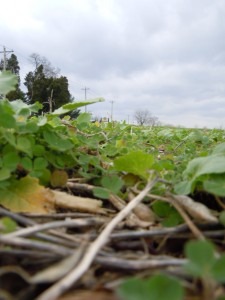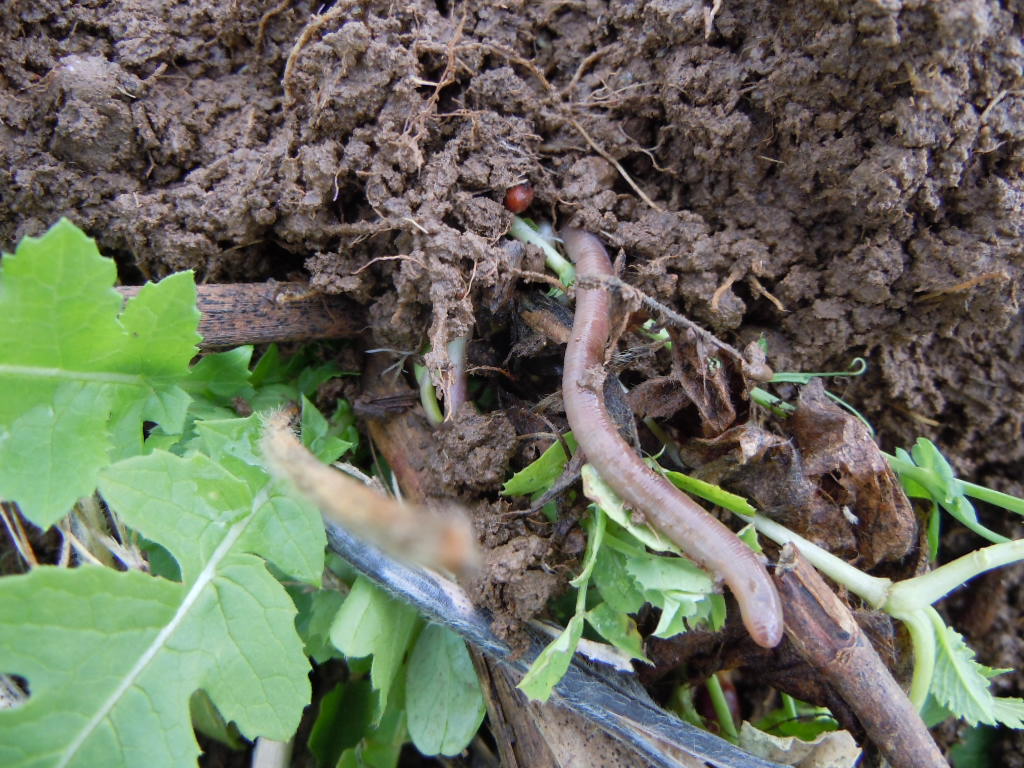Many cover crops were planted in September and even into early October in much of the Midwest in 2011. Some of those cover crops are not very advanced in their growth by mid-November. Does this mean that they are useless or worthless? As I often say in meetings or at field days…”always take a shovel with you.” You will likely be surprised!
I have been in several root pits this fall and also have dug up dozens of cover crop plants. One of my goals in the field is to measure roots on species like annual ryegrass, cover crop radishes, oats, cereal rye, Austrian winter peas, rape, kale, cowpwea, Hairy Vetch, Phacelia, turnips, and crimson clover. Some of the cover crops were in fields that were long term no-till and some were conventionally tilled.
So what have I found so far?
- Four inch tall Annual Ryegrass with 21″ deep roots

Very little top growth does not mean very little root growth. This radish had well over 12" of root depth. - 15″ deep radish roots that had 2″ tall tops and a “pencil” sized tuber
- 12″ deep crimson clover roots under a 2″ tall top (with many nodules)
- 35″ deep roots on oats that had 20-25″ tall top growth (prevented planting situation planted in early September)
- 30″ deep roots on radishes that had 20-25″ tall top growth and 2-3″ diameter tubers (prevented planting situation planted in early September)
- 12″ deep roots under 18″ tall Austrian Winter Peas (planted in late August after wheat)
- 20″ deep cereal rye roots with 6″ tall top growth (planted in late August after wheat)
While it would be nice to have more top growth, what’s below the soil surface is impressive. As I learned from Dr. Eileen Kladivko from Purdue University nearly 8 years ago…it’s what is below the surface that really counts for most farmers.
Earthworms were abundant in the cover crop soils, but not so much in the non-cover cropped fields. Another factor that was impressive was the amount of roots…or the density of the root mass in the soil, even on the short cover crops.
So why does this matter? If we are to have better soil structure we need living roots. If we are to have better erosion control we need living roots. If we are to scavenge nutrients, we need scavenging roots. In fact, the roots are what gives us the vast majority of the positive benefits most producers find with their cover crops. Cover crops farmers can’t be “windshield” farmers…they need to have their shovel with them…and when they see the roots, that’s when cover crops get the most exciting to them…and me.


